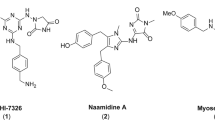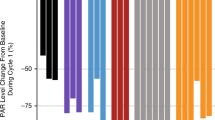Abstract
Rhizoxin is a macrocyclic lactone compound that binds to tubulin and inhibits microtubule assembly. Rhizoxin demonstrated preclinical anti-tumour activity against a variety of human tumour cell lines and xenograft models. Phase I evaluation found a maximum tolerated rhizoxin dose of 2.6 mg m-2, with reversible, but dose-limiting, mucositis, leucopenia and diarrhoea. Clinical trials were then initiated by the EORTC ECSG in melanoma, breast, head and neck, and non-small-cell lung cancers with the recommended phase II rhizoxin dose of 2 mg m-2. Pharmacological studies were instituted with the phase II trials to complement the limited pharmacokinetic data available from the phase I trial. Blood samples were obtained from 69 of 103 eligible patients enrolled in phase II rhizoxin studies, and these were evaluable for pharmacokinetic analysis in 36 patients. Plasma rhizoxin concentrations were determined by high-performance liquid chromatography (HPLC), and post-distribution pharmacokinetic parameters were estimated by a one-compartment model. Rhizoxin was rapidly eliminated from plasma, with a median systemic clearance of 8.41 min-1 m-2 and an elimination half-life of 10.4 min. Rhizoxin area under the concentration-time curve (AUC) was higher in patients obtaining a partial response or stable disease than in those with progressive disease (median 314 vs 222 ng ml-1 min; P = 0.03). As predicted from previous studies, haematological and gastrointestinal toxicity was observed, but could not be shown to be related to rhizoxin AUC. This study demonstrated the rapid and variable elimination of rhizoxin from the systemic circulation. The presence of pharmacodynamic relationships and the low level of systemic toxicity suggest that future trials of rhizoxin with alternative dosage or treatment schedules are warranted.
This is a preview of subscription content, access via your institution
Access options
Subscribe to this journal
Receive 24 print issues and online access
$259.00 per year
only $10.79 per issue
Buy this article
- Purchase on Springer Link
- Instant access to full article PDF
Prices may be subject to local taxes which are calculated during checkout
Similar content being viewed by others
Author information
Authors and Affiliations
Consortia
Rights and permissions
About this article
Cite this article
McLeod, H., Murray, L., Wanders, J. et al. Multicentre phase II pharmacological evaluation of rhizoxin. Br J Cancer 74, 1944–1948 (1996). https://doi.org/10.1038/bjc.1996.657
Issue Date:
DOI: https://doi.org/10.1038/bjc.1996.657



